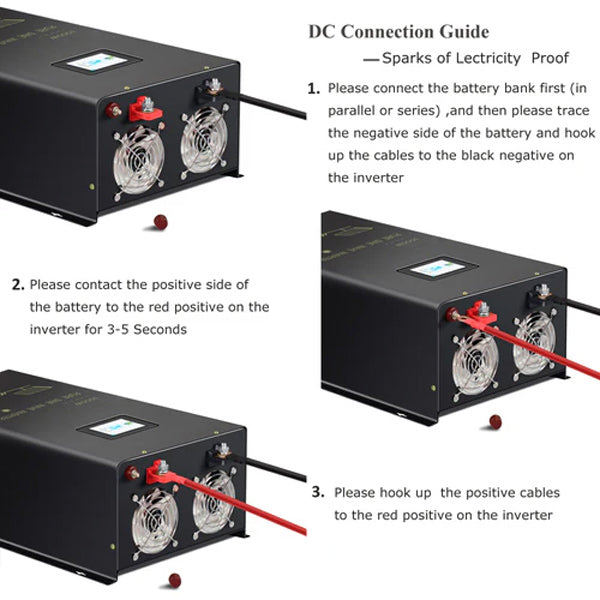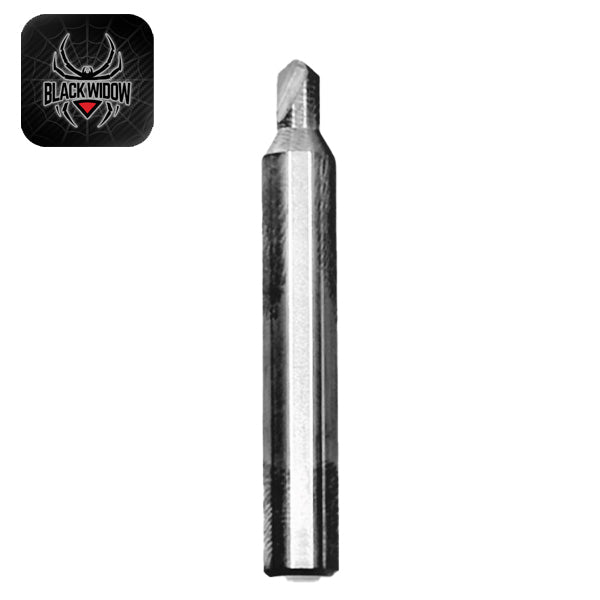Description
The KLF-SPT3000
is a 3000 Watt Split Phase Pure Sine Wave Inverter
Split Phase Pure Sine Wave Power Inverter –
Provides 3000 Watt pure sine wave continuous power DC 24volt to 120V/240V AC split phase, high quality and stable output power, 60HZ, high frequency, ideal for sensitive loads appliances under 3000 Watt for Jobsite, RV, and whole house backup emergency
Digital LCD Display Monitor –
Power usage with no effort LCD Display for battery volt and capacity, simultaneous tracking of 3 output circuits for volt and amper of dual 120 VAC mode, volt and frequency of 240VAC mode, easily master the power inverter working status, a good source of back up power supply for off-grid system or emergency like power failure
Multiple Outlets –
Features 2 circuit 120v AC outputs (AC1 and AC2) with 4 household outlets, each circuit can support the 1500W output, 1+ heavy duty 240VAC universal plug and a hardware terminal with multiple output (L1+LP2=220V, L1+N=110V, L2+N=110V)
High Efficiency –
And plenty of power Up to 91.6% efficiency, with maximum 12.5A current output in the 240V circuit, perfectly adapted to high-power 240VAC appliances. Supports a maximum 12.5A hardware terminal and dual 120V 12.5Amp output circuits : AC1 and AC2, can support the 1500W output at the same time
Soft Starter Design –
With soft starter built-in, this reduces the instantaneous impact of inrush current to allow the AC voltage to rise smoothly, effectively extending the life of the appliance.
Fully Safety Protections
– isolated input/output design, input low voltage, input high voltage, overload, temperature, short circuit, battery reverse
Attentions for resistive load applications:
If you need the inverter to run the resistive load (like laptops, TVs, electric cookers, lights), please choose the inverter with continuous power higher than the appliance’s rated power. For example, for the power inverter with continuous power 2500W, it is suggested to run the appliance with rated power less than 2500W. It is better to use 80% of the rated power.
Attentions for inductive load applications:
If you use refrigerators, freezers, microwaves, water pumps, air conditioners and other appliances with compressors or motrs, please choose the inverter whose continuous power is 3-7 times higher than your appliances.
More Details Below:
Net Weight (Pound)
15.5
Wattage
3000 W
AC Output Voltage
24V / 48V
DC Input Voltage Range
21-30V / 42-60V
AC Output Voltage
120VAC and 240VAC
No Load Current Draw
<30W Efficiency ≧90% AC Regulation 3% Frequency 60Hz Low Voltage Alarm 19.5-21.5v / 43-45v Low Voltage Shut Down 18.5-20.5v / 41.5-42.5v Overload Shut off & Recover Manually Over Voltage Shutdown 30.5V / 61.5V Over Voltage Protection shutoff Output Automatically Over Heat Protection Cooling fans run when it's over 120 degrees Fahrenheit Cooling Fans 2 Working Temperature -10 ℃ TO 50 ℃ / -50℉ TO 122℉ Storage Temperature -30 ℃ TO 70 ℃ / -86℉ TO 158℉ Working Humidity 20% to 90% RH Non-condensing Start Soft Start Total Harmonic Distortion THD<5% Warranty 12 months for non-artificial damage 1). Use 120V output only: 1500 W highest for one double US sockets (AC1/AC2), AC1 and AC2 can support the 1500W output at the same time. There will be 3000W in total for AC1 and AC2. (If just use one 120 vac, with just AC1 or AC2, the output voltage will decrease 0-8v according to the load.) 2). Use 240v output only: 3000W Max output 3). Use both 120V output and 240V output: The total amper cannot be high than 12.5 A (3000W/240 V) for all the connection, for example, there is 1000W 240V equipment, its current is 1000W/240V=4. 1 6 A. for the 120V, its total current cannot be higher than 8.33A in total. LCD Display AC Panel DC Connection Installation Instructions: 1) . Can I add a fuse or circuit breaker between the input terminal of the inverter and the battery? if so, what specifications are recommended? Yes, the following is the calculation of fuse ampere. Continuous power of the inverter ÷ Lowest input voltage = Fuse Ampere, E.G. 3000W 12VDC version: recommend a 300Amp fuse (3000W÷10VDC=300Amp) 3000W 24VDC version: recommend a 150Amp fuse (3000W÷20VDC=150Amp) 3000W 36VDC version: recommend a 100Amp fuse (3000W÷30VDC=100Amp) 3000W 48VDC version: recommend a 75Amp fuse (3000W÷40VDC=75Amp) 2). Why did sparks appear on the cable and the inverter terminal when connecting the battery to the inverter? This is normal, and it is not that the inverter is malfunctioning. The inverter has built-in large capacitors, a very small amount of power is still stored inside. When the battery cable is connected to the input of the inverter, sparks may appear, which is a discharge process. Please feel free to use it. 3). Why the inverter's output voltage keeps dropping or even shuts down automatically when running loads? e.g 3000W 12VDC version Please check I there is a fuse or breaker installed in your system . Generally, we recommend that a 300Amp fuse be installed between, the inverter and the battery. If the fuse size is too small, it will limit the input current. Please ensure that you're using standard cables . If there are 4 cables please use them all, or the output will only be about a half, If you use your own cable, please ensure that the sable specification is larger than AWG 4. and if the length exceeds 24 inches, please thicken the cable. Please check if the battery capacity is too small . We recommend connecting to a battery system a 300AH for a 3000-Watt 12VDC inverter. When the DC LED reading drops while the load is running, it is likely that your battery capacity is too small to supply power to the load. Please try to add other batteries 4). Why the inverter can't be turned on? Please fully charge the battery before installing the inverter. There are some large capacitors built into the inverter, so it may be in the low-voltage protection or even unable to turn on when the battery power is low. 5). Why can't my inverter run the refrigerator? Compressors are inductive in nature and would be a hard load on the inverter. The vast majority of the refrigerator's power consumption takes place in the compressor, which kicks the instantaneous power in the startup phase to 6- times, or even 10 times bigger than its working power. If you want to power up a refrigerator, we suggest you use a 10 times higher power inverter, please check that the load is within the allowable range.







